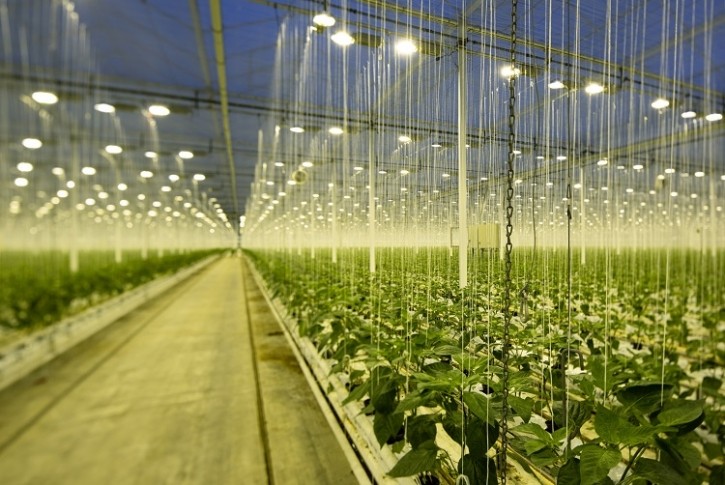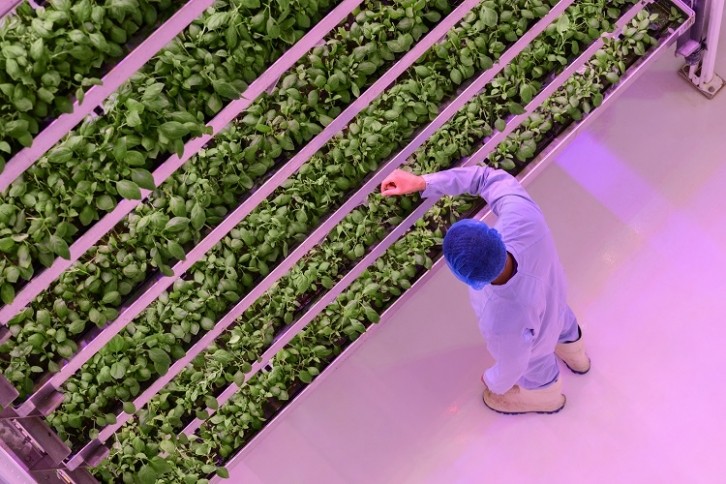Controlled environment agriculture (CEA), which includes vertical farming, aquaponics, aeroponics, and hydroponics systems, takes a technology-based approach to farming.
By creating fully controlled environments for plants, CEA aims to deliver year-round cultivation with fewer agricultural inputs and lower carbon emissions compared to expansive open farms.
But the sector that once promised to disrupt conventional food production forever is now facing significant hurdles. Energy costs are often one of, if not the largest component of operational expenditure, and rising energy costs have seen high-profile CEA operators struggle to stay afloat.
This last year alone has seen Dutch company Glowfarms, UK-based Eider Vertical Farming, and US-based Fifth Season cease operations. Germany-headquartered Infarm announced plans to halve its headcount, downsize operations, and shift its focus to its ‘Growing Centres’.
Can technology help overcome obstacles to success?
Addressing industry failures
Industry sentiment suggests that CEA businesses prone to failure are headed up by unqualified, inexperienced operators.
This is the perspective of David Farquhar, CEO of Intelligence Growth Solutions (IGS) – a Scotland-headquartered vertical farming technology supplier.
CEA failures to date have largely come down to poor business models, Farquhar told delegates at F&A Next, an event hosted by Rabobank, Wageningen University & Research, Anterra Capital and StartLife late May. In such cases, operators may not have played to their strengths and acknowledged their weaknesses. “Can you name the last farmer who built their own combine harvester?
“The problem with these guys that are going bust is they’re not farmers and they’re not technology companies. They’re trying to ride two horses at the same time, neither of which they’re qualified to do. What do you expect the result to be?”
Rien Kamman, CEO of Source.ag, agrees that businesses should keep to their specialisations. For Source.ag, that means building artificial intelligence-powered software as a service to growers, many of whom are operating high-, medium- or low-tech greenhouses.
While the growers get their hands dirty, Source.ag helps in the decision-making process. The company simulates the biology of predominantly fruit-bearing crops to help operators find the ‘optimal route’ to the ‘highest profit, the lowest resource usage, and the lowest risk’.
“I agree, the only thing we’re good at is building AI and software. That’s it. But we do this as a service to growers [to help] make crucial decisions that will make or break their cultivation.”
Ensuring CEA is more sustainable than open-field cultivation
That is not to say that energy was not a major factor in some CEA operators’ demise. Where energy is sourced, and how much it costs, is fundamental to the sector’s future sustainability.
According to most metrics, vertical farming is the ‘greener’ option. To grow 1kg lettuce in an open field uses around 250L water, efficient greenhouses use around 25L, and IGS’s vertical farming technology uses just 2.5L. As to land use, the company’s 1m-high vertical farming towers produce around 25 tonnes of crop per annum, which in an open-field situation would require around 10 hectares. In areas facing water scarcity or soil infertility, the advantages of CEA are even more obvious.
But whether CEA is more environmentally sustainable than open-field cultivation is up for debate. Questions surrounding its eco-credentials largely centre around energy use, which is inextricably linked to the bottom line.
Recent research out of Scandinavia found that growing vegetables by vertical farming outperforms cultivation on field and in greenhouses in terms of land use and water use. However, the researchers found vertical farming is responsible for higher greenhouse gas (GHG) emissions than open-field cultivation, but lower than greenhouses. Further, vertical farming was assessed less efficient in terms of energy inputs than on-field cultivation and greenhouses.
How the sector generates energy, and how efficiently it uses it, is going to be ‘crucial’ to its environmental sustainability, suggested Source.ag’s Kamman. Using renewable energy is not only greener, but would decouple the sector from the price of gas.
“We’ve seen greenhouses shift from gas to [renewably energy source] geothermal for heating, and I think we’ll see an acceleration of that,” said Kamman.

IGS’s Farquhar also sees a solution in co-location, whereby vertical farms are linked to a renewable energy source via a private wire. This can change the economics ‘fundamentally’, with benefits for both the vertical farmer and the energy producer. “A lot of our customers are planning to do exactly that,” he told delegates.
Sowing profitability, affordability, accessibility into controlled environment agriculture
Profitability does not come down to energy use alone. As technology and service providers, both IGS and Source.ag aim to support growers to build profitable businesses. And in improving profitability, they both hope to improve accessibility and affordability for consumers.
For Source.ag, these factors are directly linked to optimisation. Through a simplistic lens, growers can optimise three key components: the plant experience (temperature, CO2, humidity etc); irrigation and nutrition; and for fruit-bearing crops, pruning, Kamman explained. Pruning is a ‘big lever’ to improve optimisation, and the CEO sees a ‘big opportunity’ for AI to make a difference here.
“I feel there is a massive opportunity to increase the availability and affordability of fresh produce simply by helping growers reach the maximum potential of the seeds and farming equipment they already have.”
Another way CEA can benefit stakeholders is by responding to need states. Growing starter plants in vertical farms, for example, is an opportunity IGS’s Farquhar has observed.
Growers are moving beyond standard leafy greens into roots, fruits and tubers, as well as brassicas such as cabbages. A large proportion of farmers (currently around 50% of IGS’s customers) are growing starter plans in vertical farms, before moving them into a greenhouse, poly tunnel, or open-field farming system to continue to grow. “We’re very strong advocates that what we do will not replace traditional agriculture, no way. It’s another tool in the farmer’s toolbelt.”
IGS has achieved this for trees, which as seedlings can then be used for reforestation projects, and for flowers for botanicals, which can supply the pharmaceutical and cosmetics industries. Another benefit from this process is reduced waste. When a tree is transported from the nursery into the field, only one out of three survives, we were told.

As to affordability for the consumer, Kamman believes cost parity has already been achieved for some CEA systems. “A lot of produce that you find in the supermarket right now are already cost competitive. The question is how to scale it globally, so that more people have access to that supply.
“That’s the real challenge that we need to solve together.”
Other challenges facing the sector: image and adoption
Concerning other potential challenges facing the sector, Kamman believes that just like any new technology in agriculture, the ‘biggest hurdle’ lies in adoption. ‘Disruption’ is not a word thrown around within the agricultural sector, he suggested. “That’s not how it works in agriculture. There are thousands of professional farmers, they really are experts…and they have 30 chances [yearly harvests] in their whole career to be successful. That’s it.”
That makes encouraging the adoption of new technology challenging. But for Source.ag, it’s not about ‘disruption’. The company is working with growers to develop its technology, with farmers’ workflow and pain points in mind, we were told.
“Let’s put the growers on a pedestal and recognise that we are technology providers, so let’s be technology providers.”
Another challenge facing CEA, and specifically vertical farming, is misperceptions surrounding the running of the technology. This comes from inaccurate imagery, suggested IGS’s Farquhar.
Such images often include a human within the vertical farm, often wearing a lab coat, a hairnet and goggles, and carrying a clipboard. These humans are breathing on the plants and poking them, recalled the CEO. “You’ve got to ask yourself, what the hell are they doing?
“You’re either managing this thing through the cloud, or you’re not. People bring three things: pests, disease, and mistakes. You need to train the machine and use things like AI and robotics to run it for you. If you see a photo of a vertical farm with a human inside it, run a mile.”
Imagery containing white LEDs and fixed racking is also a bad sign. “If you see trays on fixed racking, you also need to run a mile because they don’t know what they’re doing.”
Source: Nature Food
‘A systematic scoping review of the sustainability of vertical farming, plant-based alternatives, food delivery services and blockchain in food systems’
Published 3 November 2022
DOI: https://doi.org/10.1038/s43016-022-00622-8
Authors: A. Charlotte Bunge, Amanda Wood, Afton Holloran and Line J. Gordon.


